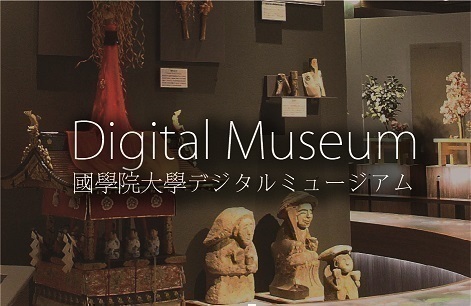- トップ
- Encyclopedia of Shinto
- Hori Hidenari
Encyclopedia of Shinto
| Main Menu: | |
| Links: |
詳細表示 (Complete Article)
| カテゴリー1: | 8. Schools, Groups, and Personalities |
|---|---|
| カテゴリー2: | Personalities |
| Title | Hori Hidenari |
| Text | (1819-87) Scholar of National Learning (kokugaku) from the period before the Meiji Restoration to the early Meiji era. He also had the alias Shigetari, and the common names Yazaemon and Naiki, and had the epistolary names Kotonoya and Taruhonoya. The son of Hori Shigeto-o, a retainer of Koga Domain (in present-day Ibaraki Prefecture), Hori was born in 1819 at the Edo residence of the Koga domainal lord (the Doi family). He trained in martial arts from childhood, and was appointed to the samurai rank of kinjū, or attendant. Upon the death of his father in 1838 he became heir to his family. Two years earlier, however, Hidenari had encountered the Shokugenshō shiryū (A Brief Account of Vocational Essentials), which inspired in him an interest in the study of economics and ambitions of pursuing kokugaku scholarship. Hori ultimately relinquished his position as family heir to his younger brother in 1842, and left the Koga domain, studying until the late 1840s as a pupil of teachers in various academies. In the course of these studies, he was profoundly influenced by the teachings of Kijima Hirokage, who inspired Hori to center his ensuing research on ongi, the study of the meaning and etymology of sounds and readings of Chinese characters (kanji). In response to the Ansei Purge (Ansei no taigoku) of 1858, Hori composed Shiko no mitate (A Shocking Rebellion), demonstrating his concern with the tumultuous affairs of the time. After the establishment of the new Meiji government in 1868, Hori was active in the area of kokugaku as a foremost representative of scholars of the inter-relationship of kotodama ("spirit-power of speech") and the significance and etymology of kanji readings. He also researched court rules of ceremony and etiquette and the history of legal institutions. Around that time, however, research on kotodama declined with the emergence of the modern field of Japanese linguistics. As part of the Great Promulgation Campaign (taikyō senpu undō), Hidenari was appointed Junior Professor of Instruction (senkyō shohakushi; see taikyō senpu) in 1870, and subsequently became a Religious Preceptor (kyōdōshoku) in 1872, then Chief Lecturer (kōshichō) at the Great Teaching Institute (Taikyōin) in 1873, Suppliant Priest (negi) at the Grand Shrines of Ise (Ise Jingū) in 1875, instructor of Japanese language at the Peer's School in 1877, Professor at the Ise Jingū Teaching Institute (Jingū Kyōin) in 1878, and in 1884 became an instructor at the shrine Kotohiragū. Hidenari traveled all over Japan to give lectures in the interests of promoting Shinto, and died in 1887 at the age of sixty-nine. He was the author of Ongi zensho (Collected Works on Kanji Pronunciation and Etymology), Kotodama myōyōron (On the Wondrous Operation of Kotodama), Kana hongi kō (Treatise on the Essence of Kana) Ongi honmatsu kō (Treatise on the Relative Importance of Kanji Pronunciation and Etymology), Kogen ongi kō (Treatise on the Pronunciation and Etymology of Ancient Words), Onzu daizenkai (Great Collected Explanation of the Chart of Sounds), Gokaku zenzu (Complete Chart of Word Characteristics), Kobungomyaku kō (Treatise on the Tradition of Ancient Literary Words) and Isoyama chidori (The plover of Mt. Iso), among other works. - Mori Mizue |




